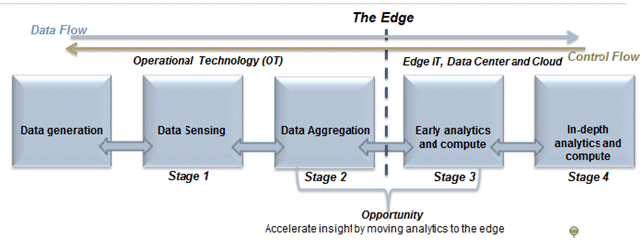Information technology is changing the world of manufacturing by digitizing fundamentally every aspect of modern manufacturing processes. Digital manufacturing and smart manufacturing are very common terms these days. The global manufacturing industry is undergoing a fundamental shift which is transforming industry operations. Industrial organizations are keen on using technology innovations for operational improvements and to drive new levels of performance and productivity.
The ongoing trend of information technology (IT) convergence with operational technology (OT) in heavy industry deals with ever changing aspects of the industry such as reorganization of manufacturing processes, assembly lines, changes in consumer demands, and so on. These facets are bringing industrial manufacturers, technology vendors, and customers into close collaboration with each other.
With the introduction of cloud in the early 2010s, manufacturing enterprises have integrated the cloud computing technology into their design processes, assembly lines, and supply chains. This has allowed manufacturers to innovate, reduce cost, and increase their competitive position in the market. However, the rapid adoption of the Industrial Internet of Things (IIoT) has led to the generation of a significant amount of data. But with this, the element of latency has always been a concern for manufacturers. For certain critical scenarios, latency issues are very challenging and disturb the decision making process for manufacturers. This has led to a radical shift from cloud to the edge. Exhibit 1 below depicts the edge at the intersection of IT and OT.
Exhibit 1: Intersection of IT and OT
Source: Frost and Sullivan
Edge computing introduces a paradigm shift with regard to acquiring, storing, and processing data. Edge computing technology places the control functions closer to the source of the data. This allows data processing and decision making closer to the source. It has enabled manufacturers to analyse data at the source, supporting fast and secure access. The use of edge technology provides industrial companies with sophisticated features and functionalities such as interoperability, security of data, low latency, and improved quality of service.
Original equipment manufacturers and system Integrators integrate analytics at the edge to perform local decision making and gain valuable insights enabling increased efficiency and throughput. Analytics can be performed using advanced predictive and prescriptive analytics at the edge making analytics faster, effective, and more efficient.
How does edge analytics benefit manufacturers?
Not only does edge analytics accelerate manufacturing processes but also increases business benefits.
- Improvement in equipment uptime: Edge analytics enables prediction of component error or probable failure well in advance and in real time. This, in turn, enhances machine maintenance scheduling and improves operational use.
- Minimizing maintenance costs: Edge analytics detects the root cause of the anomaly and provides instructions about repair with regards to the particular action needed and the instance at which it is needed, thereby reducing repair costs.
- Reducing equipment failure and boosting equipment manufacturing: Edge analytics can monitor and analyse the equipment and its components, which can help detect and prevent any catastrophe prior to its occurrence. This boosts the equipment performance.
- Enhanced Business Models: Edge analytics enable manufacturers to tap into new business opportunities and tailor new and efficient business models.
Advanced analytics facilitates the management of higher volumes of data, making it more prompt and enabling ground-breaking tactical decisions.
A Hybrid Approach: Redefining Edge Intelligence
Manufacturers around the world are rapidly embracing the smart factory technology. With more data being generated from more sources, it is imperative that manufacturers streamline their operations, provide better customer support, and improve their position amongst competitors. Today, business needs are constantly evolving and demand the use of latest technologies. For such scenarios, industrial organizations are largely depending on the convergence of technologies. One such convergence is a combination of edge and cloud computing. This unique combination of centralized and distributed computing resources into a single architecture has been widely accepted by many manufacturers, enabling seamless communication of edge devices with each other and also with the cloud.
Frost & Sullivan believes that as many as 85-90% of the enterprises will optimise the use of any form of a hybrid model by 2022. The top industrial manufacturers are constantly on a lookout for more radical innovations and breakthrough technologies for business model innovation.
The advent of the IoT and real-time data analytics has created the need for not only increased bandwidth, but also the speed to keep everything interconnected. Hence, these hybrid cloud-edge environments have become extremely important for enterprises. Edge cloud computing is undoubtedly compelling, dealing with issues such as security, cost, latency and performance.
IIoT and its expansion across manufacturing companies and enterprises is making way for new business opportunities and markets, creating significant demand for digital transformation by vendors and customers on existing and new infrastructures across the value chain for all industries.





